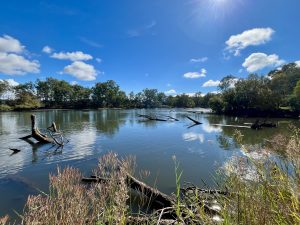While it’s been looking very dry and mostly brown out in the parks over the hotter weather, some cooler mornings lately have been perfect for tackling some trickier trails if you wanted to get the blood pumping and those daily floor counts up on your fitness tracker! Baranduda Regional Park certainly delivers here, offering magnificent views as a reward. And there have still been some interesting things to spot if one goes slowly and pays attention. Some signs of the changing seasons were noted, including the last of the sticky everlasting daisies going to seed at Swainsona Conservation Reserve and the female golden orb-weaver spiders looking skinny after laying their egg sacks. The adults will die off now but their spiderlings will be safe until they emerge in the spring.
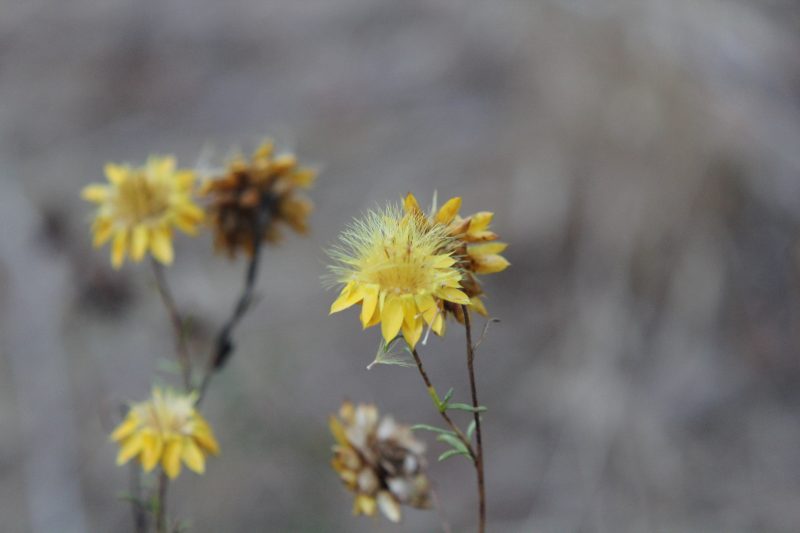
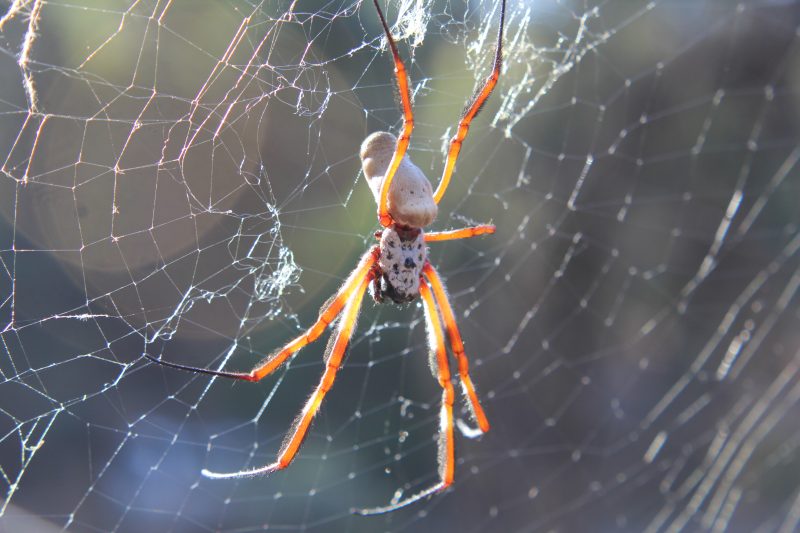
After the destruction of the December storm affecting Castle Creek Conservation Reserve in particular, the bush is bouncing back with regeneration of trees that lost their crowns. The new shoots, called epicormic shoots, are usually dormant but spring into action when the crown of a tree is lost to wind or fire, and allow the tree to quickly sprout energy-producing foliage that enable it to survive.
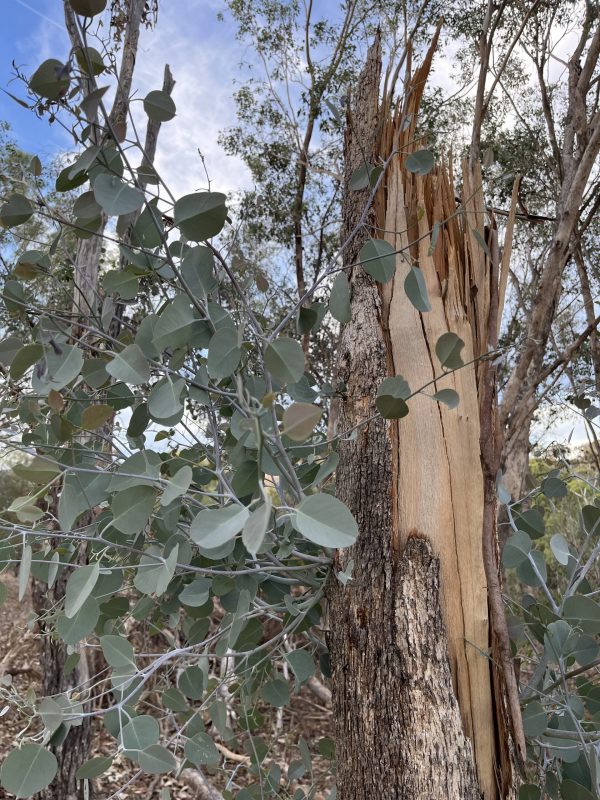
A close-up encounter with a curious echidna was a highlight while out early in the morning at Castle Creek. Remaining still and quiet encouraged the spiky fellow to go about his business without disruption. What a special moment to observe! But if you’re not lucky enough to see an actual animal, you might see traces in the form of scats (poo) and probably the most interesting poo of all is wombat poo! It’s the only cube-shaped poo known in the animal world and has straight edges to make sure it doesn’t roll away when deposited on rocks and logs, which is how wombats like to mark their territory.
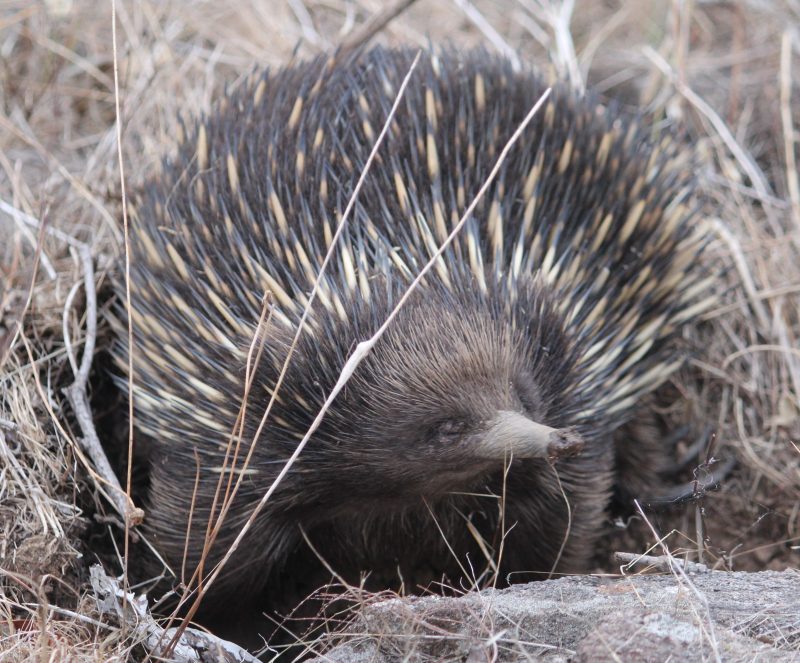
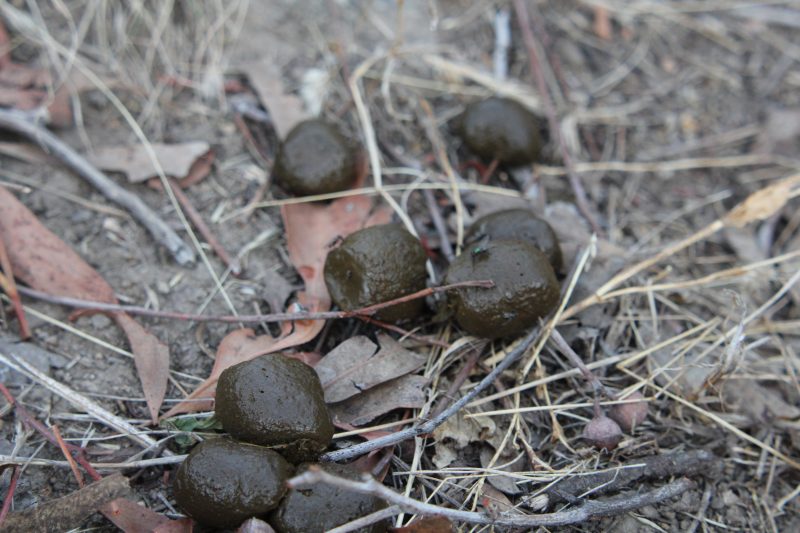
It never ceases to amaze when life is found in places that at first glance, appear devoid of life. Take an old, dead tree for example – not only might it contain ecologically important hollows, but it might be a good place for native grass-carrying wasps to lay their eggs. Females will lay an egg in any crack, crevice, or hole they can find and then immobilise some grasshopper prey and place that in with the egg. Lastly, to seal the hole, she will cut and collect grass stems to plug it all up – and it’s these bits of grass sticking out that are easy to spot.
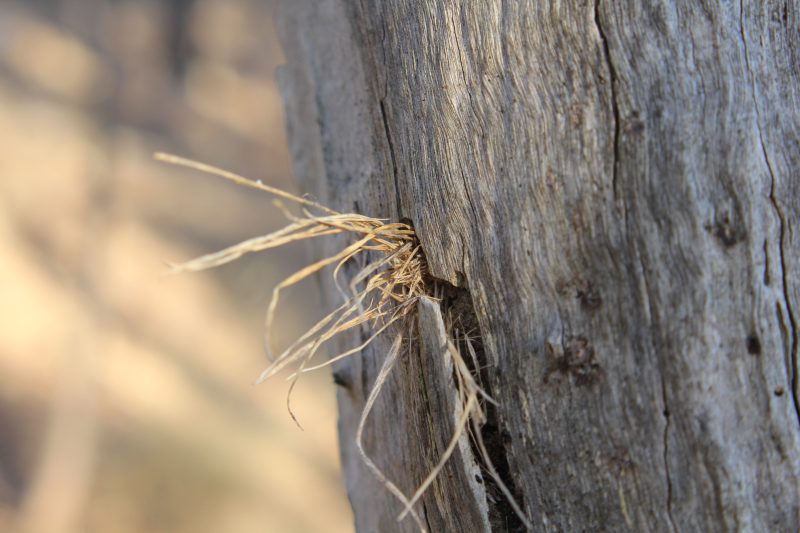
For some colour amongst the brown, a Lydia lichen moth was spotted at Swainsona. You can see the feathery antennae of this male, used to smell the pheromones produced by the females. The bright colours of these moths may serve as a warning to predators, such as birds, that the moth is poisonous. Caterpillars of these moths feed on lichen (hence their name!) and the toxins in the lichen are retained as the caterpillar metamorphoses into an adult moth.
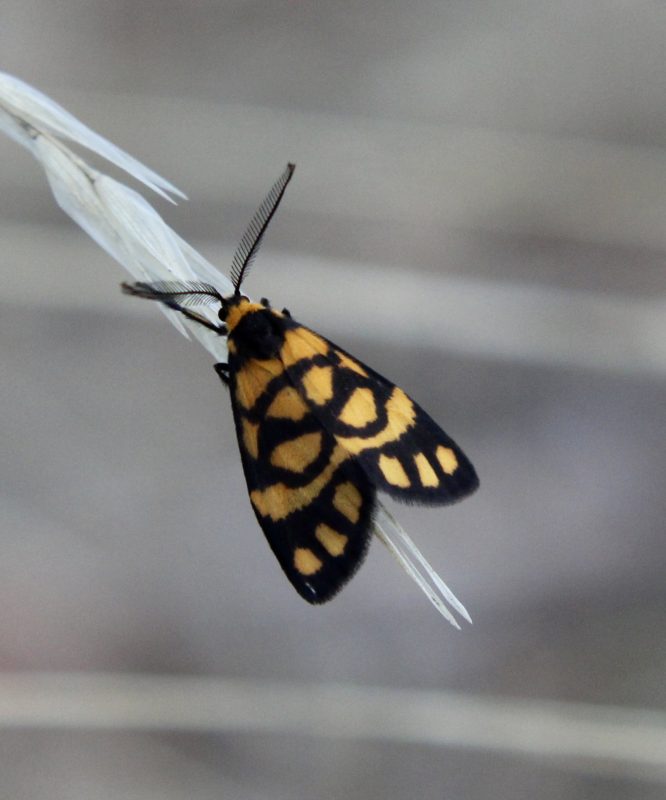
Speaking of lichens, have you ever wondered what exactly they are? They aren’t plants but rather an example of a symbiotic relationship where a fungus provides a suitable environment for chlorophyll-containing algae or cyanobacteria, which then produce food energy via photosynthesis that the fungus can use. Take a magnifying lens to investigate closer next time you’re out walking and you might even see some lichen with cup-shaped structures called apothecia which is where spores are produced.
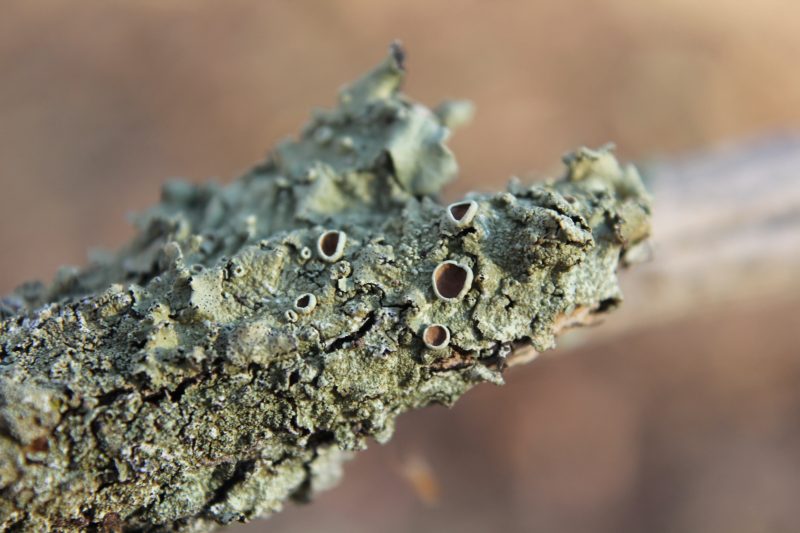
Another winged insect you might have seen recently is the imperial jezebel butterfly. While the upper wing surface is mostly white outlined in black, the underside displays bright red and yellow. Quite a captivating sight! These butterflies feed on the nectar of native plants including eucalypts and the caterpillars feed on native mistletoes. This one was spotted on the fire trail at McFarlanes Hill Regional Park.
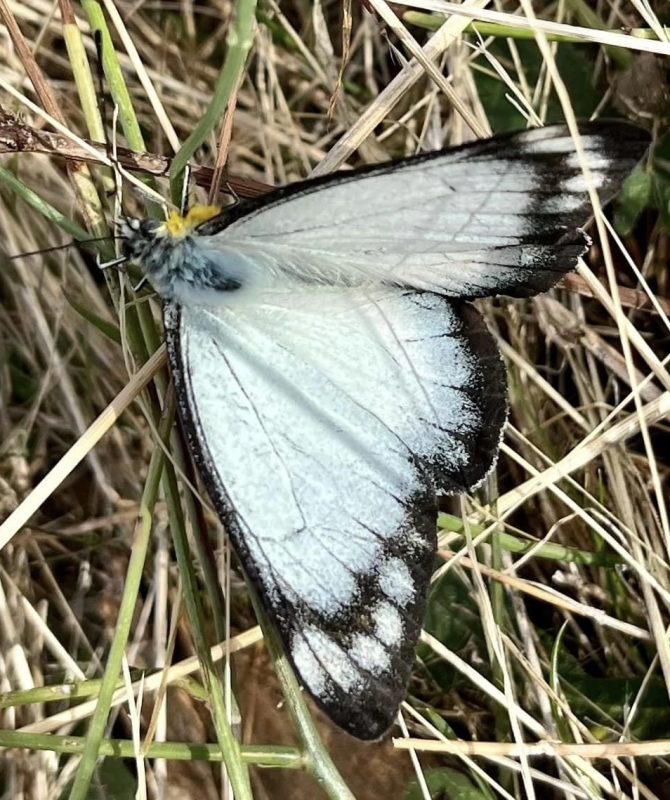
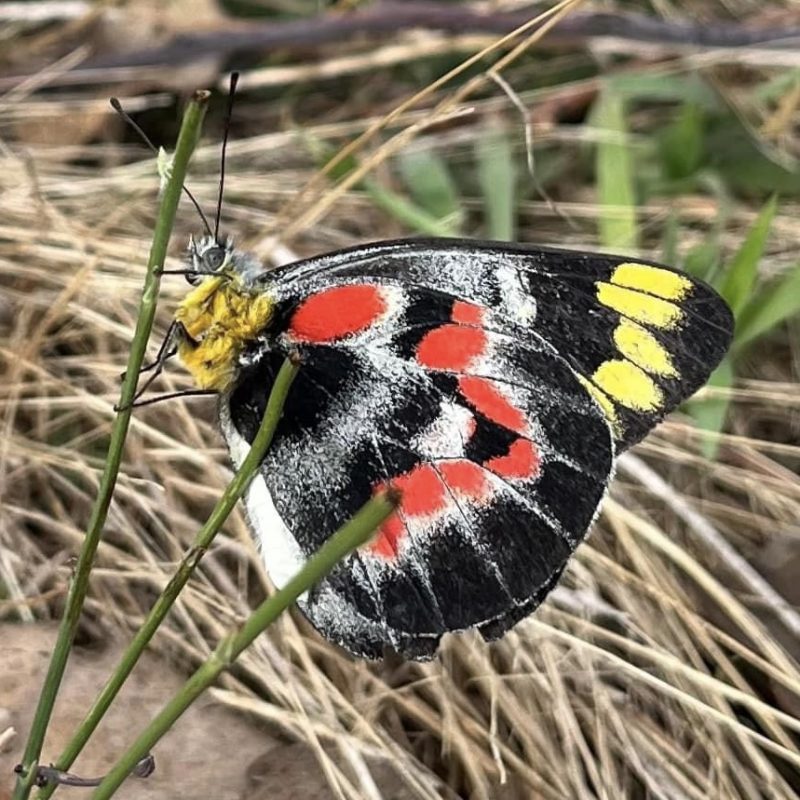
What have you been noticing in our parks? Don’t forget you can follow us on Instagram and use the hashtag #parklandsalburywodonga to share your finds!
Fingers crossed now for some rain to green things up and encourage all the wonderful fungi to appear!





